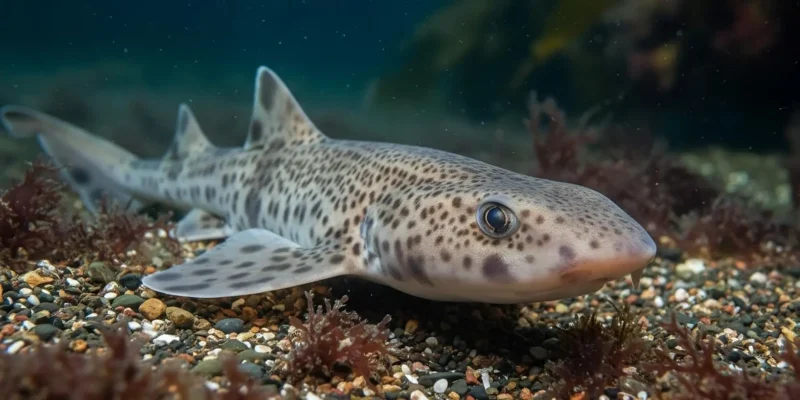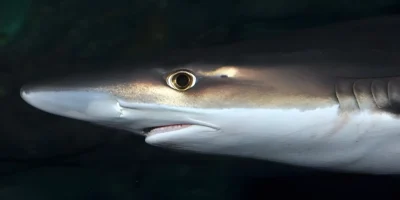When You Think Of A Shark, You Probably Imagine A Large, Powerful Predator Gliding Through The Open Oceans. Species Like The Great White Shark, Tiger Shark, And Bull Shark Dominate The Media, With Rare Attacks On Humans Sparking Widespread Fear And Influencing Policy – For Example, Through Increased Use Of Shark Nets In Australia.
Yet These Three Charismatic Predators Represent Less Than 0.6 Percent Of All Living Sharks. The More Than 500 Shark Species Existing Today Display An Astonishing Diversity: From Gigantic 20-Meter-Long Whale Sharks To Handy-Sized Bioluminescent Lantern Sharks, From Flat Angel Sharks To Hammer Sharks, Saw Sharks, Goblin Sharks, And Wobbegongs.
But How Did This Extraordinary Diversity Develop? A New Study Led By Me Investigated The Evolution Of Body Shapes In Sharks – From Their Ancient Ancestors Over 400 Million Years Ago To Today.
A Time Before The Dinosaurs
The Diversity Of Forms Seen Today Did Not Arise Overnight – The Shark Lineage Dates Back To A Time Before The Dinosaurs. Scientists Normally Use Fossils To Trace Changes In Body Shape And Size In The Evolutionary Tree Of Different Animal Groups. With Sharks, However, This Is Impossible.
The Reason: Shark Skeletons Are Made Of Cartilage Instead Of Bone. Unlike Mammals, Birds, Or Reptiles, There Are Hardly Any Complete Fossils Of Ancient Sharks. Instead, Countless Isolated Fossil Teeth Are Found.
For This Reason, Scientists Have So Far Known Very Little About How, When, And Why The Diversity Of Shark Body Types Seen Today Developed. Instead Of Using Fossils, We Collected Information About Body Shapes From Scientific Illustrations Of More Than 400 Living Shark Species. Using A Statistical Method Called “Ancestral State Reconstruction,” We Estimated The Body Shapes Of Ancient Sharks.
Additionally, We Collected Data On The Preferred Habitats Of Different Shark Species And On How Environmental Conditions Have Changed Since The First Sharks Appeared.
Ancient Sharks Were Bottom Dwellers
Our Analyses Suggest That Ancient Sharks Likely Lived Benthically – That Is, They Stayed On Or Near The Seabed. Pelagic Sharks, Which Roamed The Open Oceans And Resembled Today’s Large Predators Such As Great White Sharks, Tiger Sharks, Or Bull Sharks, Only Appeared In The Jurassic Period Between 145 And 201 Million Years Ago – At The Earliest.
This Means: During The First Half Of Their Existence, Sharks Were Restricted To Habitats Near The Seabed.
“Interestingly, We Found That In Three Of The Four Shark Conquests Of The Open Ocean, A Change In Body Shape Occurred – Including The Evolution Of A Deeper Body And A More Symmetrical Tail – Which Took Place Shortly Before The Habitat Shift.”
The Timing Of These Changes Suggests That Historical Climate Change – Including Rising Sea Levels And Tectonic Shifts – Played A Crucial Role In Creating New Pelagic Habitats That These Sharks Could Occupy.
In Other Words: As The Climate Changed, The Habitats Of Ancient Sharks Also Changed, Allowing The Evolution Of New Body Shapes. By Chance, These Deeper Bodies With More Symmetrical Tails Proved Better Suited For Life In The Open Water.
By Looking Back In Time, We Can Better Understand How Ancient Ecosystems Functioned And Predict How They Might Respond To Future Human-Induced Climate Change. These Findings Also Show: Not All Sharks Are The Same. Most Sharks – Both Ancient And Living – Are Small Bottom Dwellers, Not Large, Dangerous Apex Predators.
So The Next Time You Think Of A Shark, Don’t Forget The Ancient Bottom Dwellers That Shaped The Seas Long Before The First Dinosaurs.




